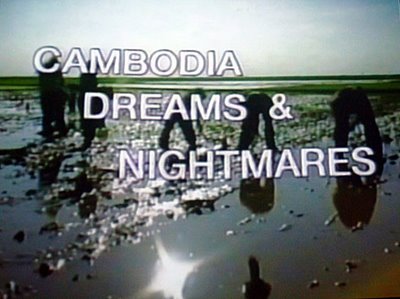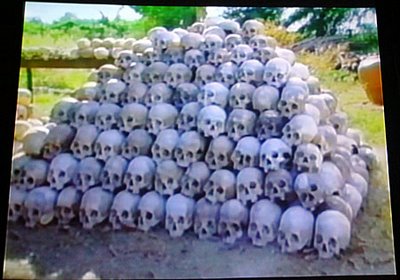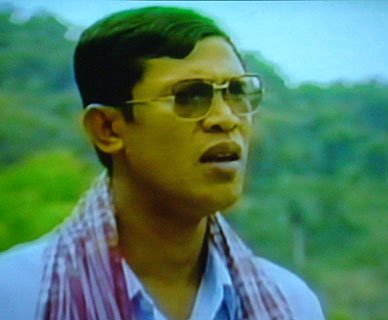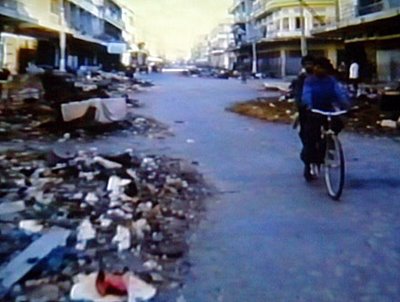Fawthrop on Heywood
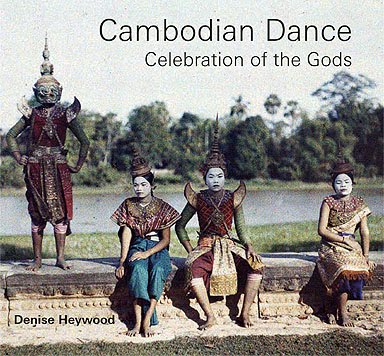
Any excuse to mention one of my favourite people, Denise Heywood, whose book, Cambodian Dance, was reviewed in the Bangkok Post by Tom Fawthrop on Monday this week.
How Cambodian culture re-emerged after the devastating Pol Pot years - by Tom Fawthrop, Bangkok Post
How Cambodian culture re-emerged after the devastating Pol Pot years - by Tom Fawthrop, Bangkok Post
The awesome grace and meticulous movements of the performers have entranced audiences since ancient times, an experience now shared with plane-loads of tourists descending on Siem Reap in western Cambodia, the jumping off point for the world's largest temple complex - legendary Angkor Wat. Dating back to the days of the great Angkor empire that flourished from the 9th to 15th centuries, Cambodian dance is a celebration of the gods, mythology and the world of the royal palace. This 144-page lavishly illustrated coffee-table book authored by Denise Heywood, a lecturer on Asian art, brings the reader a fine appreciation of Cambodian dance intertwined with the turbulent history and how it has always been at the core of Khmer culture and identity. The book details and explains the origins and development of the dances, music and shadow puppetry, all in the context of their spiritual importance as a medium for communicating with the gods. But Cambodia's recent tragedy brought its great tradition of dance near oblivion. The "Killing Fields" regime of the Khmer Rouge not only killed through slave labour, starvation and slaughter nearly 2 million people, including 90 per cent of artists, dancers and writers, but it also came close to extinguishing Khmer culture and tradition. Pol Pot's brand new agrarian dystopia had no place for the arts, culture or any other kind of entertainment except xenophobic songs and Pol Pot propaganda.
Heywood first arrived in Cambodia as a freelance writer in 1994, and her interest in dance was heightened by the extraordinary tale of how a few dancers and choreographers survived the genocidal years from 1975 to 79. In January 1979 a new Heng Samrin government backed by Vietnam proclaimed the restoration of normal society after four years of the Pol Pot regime had trashed most aspects of family life and the previous society. A handful of survivors emerged from the darkest era in Cambodian history dedicated to resuscitating their cherished traditions of dance. Actor, poet and director Pich Tum Kravel and former director of the National Conservatory Chheng Phon were among the cultural stars who miraculously survived. They became the key people enlisted by the new Ministry of Information and Culture under Keo Chenda, charged with the critical mission of bringing all the surviving dancers together. The expertise was handed down through the generations from master to pupil and never documented in written form, so everything depended on human memory. The late Chea Samy became the leading teacher at the re-established School of Fine Arts in 1981 (ironically Pol Pot was her brother-in-law). Piecing together the collective memories of survivors and much of the vast repertory, the performing arts were revived.
When this reviewer saw the post-Pol Pot Cambodian National Dance Company perform in Phnom Penh in 1981, it was a highly emotional experience. Members of the audience wept. This outpouring of raw emotion encompassed both tears of sadness for those loved ones they would never see again - and tears of joy that Khmer dance was alive again and had risen from the ashes of nihilistic destruction. Nothing had greater significance for the Khmer people in this process of rebuilding than this revival of the nation's soul and psyche in which dance plays a central role.
While Heywood is to be commended for her documentation of the revival of dance in the 1980s, it is a pity she has wrongly contextualised this cultural renaissance by claiming that "Heng Samrin's Vietnamese government" organised a national arts festival in 1980. In fact President Heng Samrin and everyone else in the new government were all Cambodians and not Vietnamese. Somehow the author has been infected with the cold war propaganda emanating from Asean governments and US embassies in the region that stressed Phnom Penh was being run by a 'Vietnamese puppet-regime' and the Cambodians blindly followed Hanoi's orders. The reality was more complicated. The cultural revival depicted in this book makes it clear that Vietnamese control over security and foreign policy, despite tensions and differences with their Cambodian allies, did not block the re-emergence of Khmer culture that at the same time planted the seeds for future independence. In 2003 Unesco bestowed formal recognition proclaiming the Royal Ballet of Cambodia to be a masterpiece of oral and intangible heritage. And one year later Prince Norodom Sihamoni, a former ballet choreographer and dancer, was crowned king.
Thai classical dance borrows much from the dance traditions of Angkorian times. After Siam's invasion of Siem Reap in 1431, hundreds of Cambodian dancers were abducted and brought to dance in Ayutthaya, at that time the capital hosting the royal court of the Thai king. This timely book also mentions that Cambodian choreographer Sophiline Shapiro has, among many other projects, adapted Mozart's Magic Flute to Khmer classical dance as part of a 2006 festival to commemorate the 250th anniversary of the great composer's birth. This production with many innovations caused a stir among the purists. Shapiro passionately defends her new productions against the critics, telling the author "increasing the repertory of dance will help to preserve it and prevent it from atrophying or becoming a museum piece."
Labels: Cambodian Dance, Denise Heywood, Tom Fawthrop
